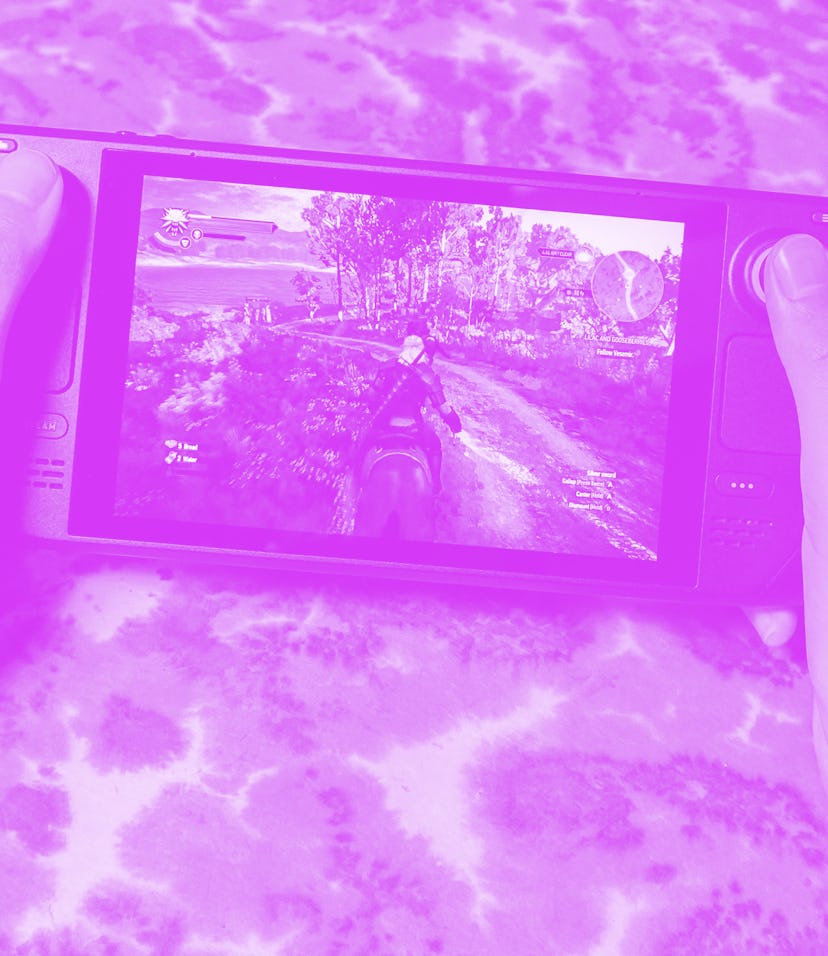Tech
Valve confirms we’re going to see a lot more Steam Deck in the future
In a booklet introducing the Steam Deck to Asia, Valve commits to its handheld and Steam OS and drops hints about future VR plans, too.

Valve is sticking with the Steam Deck for the long term, according to a booklet the company created ahead of the launch of the Steam Deck in Japan, South Korea, Taiwan, and Hong Kong.
Besides highlighting the success of Steam, Valve’s various hardware efforts, and the development of the Steam Deck, the booklet refers to the handheld Linux PC as a “multi-generational product line” that Valve plans on supporting for “the foreseeable future.”
More Steam Decks — The plan to produce a Steam Deck successor is something Valve’s touched on in the past, but now it’s putting that commitment in writing.
Valve will follow up on this product with improvements and iterations to hardware and software, bringing new versions of Steam Deck to market. Like the original, and like all PCs, these future products will continue to provide access to the same Steam game catalog that gamers already know and love.
It’s not clear how many Steam Deck’s have been sold up to this point, but the device remains among the top sellers on Steam almost half a year after it launched, so people are at least reserving them, if not outright purchasing them. Valve continues to ramp up production too, so some kind of demand is trying to be met, whether it's big or small.
More SteamOS — Valve’s Linux-based SteamOS that powers the Steam Deck will see similar support. There were already plans to bring the Steam Deck user interface to “Big Picture” mode, the version of the Steam desktop client for use on TVs with controllers, and Valve’s recommitting to those plans with this booklet.
Interestingly, the booklet also mentions bringing the Steam Deck’s UI to virtual reality, “soon, the Steam Deck user interface will be available on PCs that are connected to a TV, and in VR,” Valve writes. Valve has its own Index headset, but its SteamVR software also powers other popular VR devices like the HTC Vive Focus 3.
Future VR plans — This isn’t the first time Valve’s connected the Steam Deck to its VR efforts. Valve CEO Gabe Newell has noted in interviews that the Steam Deck hardware could be seen as a “stepping stone” for powerful standalone VR hardware (perhaps a device like the Quest 2). Valve product designer Greg Coomer was also quoted as saying the custom AMD chip that powers the Steam Deck could certainly be used in VR hardware and is “very relevant to us and our future plans,” in an interview with The Verge.
Valve’s booklet make’s it clear that the company views all of its hardware experiments, from the Steam Controller, to the failure that was the Steam Machine, as integral to figuring out the Steam Deck. Clearly, the company sees the Steam Deck as something it wants to keep iterating on, but if history is any guide, the work on the Steam Deck will be influencing and informing all of Valve’s other projects for a long while.
The Steam storefront is still the major moneymaker for Valve, but after using the device and reading Valve’s thoughts about it, the Steam Deck sure seems like the company’s future.